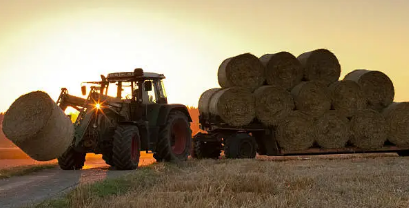Baler Twine: Sisal vs. Plastic
Choosing between sisal and plastic baling twine depends on numerous factors, including durability, cost, environmental impact, and personal preferences.
When it comes to baling operations, the choice of baler twine often becomes a topic of heated debate among farmers. In the world of baler twine, two types are prominent: sisal and plastic. Both materials have their advantages and drawbacks, making the selection process deeply personal and dependent on individual needs.
On the one hand, sisal baling twine, derived from the Agave sisalana plant, is traditionally favoured for its biodegradability and strength. It is resilient, holds knots well, and is less likely to damage machinery. However, sisal twine is susceptible to rot and pests, and weather conditions can significantly affect its durability.
On the other hand, plastic baling twine is increasingly becoming a popular choice due to its resistance to environmental factors and longevity. It can withstand harsh climate conditions and offers excellent tensile strength that is often much higher than that of sisal twine. Also, plastic twine enables tighter bale binding, reducing storage space and ensuring easier transport.
Nevertheless, it’s important to consider that plastic twine, while durable, poses an environmental challenge. Improper disposal can lead to soil and water contamination, and it’s not biodegradable. Hence, the decision should be made considering the environmental implications, too.
If your farming operations are in Australia and you are considering switching to plastic twine, you can find quality resources at Silage Wrap Australia. They offer a range of farming supplies, including plastic baling twine, known for their reliability and strength. Silage Wrap Australia prioritizes sustainability and ensures its products are eco-friendly, taking into account the long-term effects on the environment.
Using the right baling twine for your high-moisture forage is critical to prevent loss during handling, transportation and storage. When choosing twine for your balers, you have several options: sisal, poly or a combination of both. While both sisal and poly twine help create durable bales, each has its advantages for your operation.
The biggest difference between sisal and poly twine is that sisal twine is made from natural, organic materials twisted together. Poly twine, on the other hand, is made from plastic polymer fibres. Because of this, it won’t biodegrade anytime soon and has more tensile strength than sisal.
Both types of twine can be used in conjunction with netwrap during the baling process to keep moisture in and rodents out. However, the type of twine you choose will have a significant impact on the durability of your bales and if they are mould and yeast-resistant. According to a study by the American Society of Agricultural and Bioengineering (ASABE), bales wrapped with nets and twine show fewer handling and storage losses compared to those wrapped with twine alone. It is because nets wrap the bales more securely to minimize stretching, which increases bale integrity and overall moisture resistance.
In conclusion, choosing between sisal and plastic baling twine depends on numerous factors, including durability, cost, environmental impact, and personal preferences. It’s crucial to weigh these aspects and make an informed decision.



